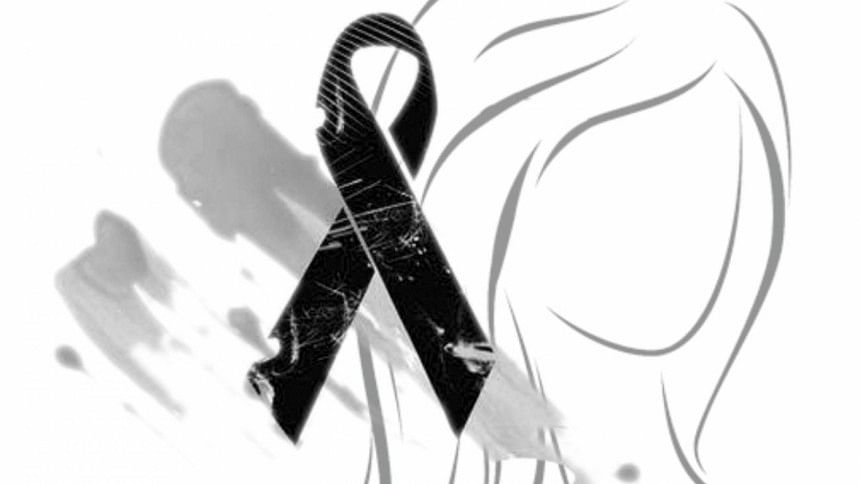The link between GBV and HIV infections

WORLD AIDS Day (WAD) celebrated on the first of December every year since 1988 aims to increase awareness of the disease, fight the stigma associated with it, improve HIV education, and mobilize resources for the global response to the epidemic.The commemoration coincides with the 16 Days of Activism against Gender Based Violence campaign, no coincidence as the links between GBV and HIV/AIDS are very clear.
On a global scale, but also in Bangladesh HIV is increasingly impacting adolescent girls and young women. They are vulnerable owing to violence, child marriage, lack of comprehensive sexuality education, inability to negotiate safe sex, and lack of access to sexual and reproductive health services – including condoms, HIV/STI testing and counselling, and treatment.
Although the HIV prevalence in Bangladesh is low, still under 0.1%, the demographics of Bangladesh present considerable challenges to the HIV prevention program. Bangladesh is a densely populated country, with enduring poverty, low levels of education, gender inequality and high levels of cross border travel. In Asia Pacific between 2005 and 2013, new infections declined by 6%. But in Bangladesh the estimated new infections increased by 25% from 2001 to 2012 and the reported new infections in Bangladesh increased by about 1.5 times over the past 5 years. The estimated number of people living with HIV in Bangladesh is 9500. However only approximately one third of these people have been diagnosed as living with HIV and only 1150 people are enrolled in care. Bangladesh provides free anti-retroviral treatment to all who need it. In order for the treatment opportunities to really have an impact it is however paramount for people to know their HIV status. Bangladesh still has very limited health facilities which offer testing and counselling for HIV. HIV testing and counselling therefore needs to be upgraded and integrated into mixed models of community-based testing, this is possible by linking it to sexual and reproductive health services.
About a third of newly diagnosed cases in 2014 affected women and in 10 percent of new cases the diagnosed person was between the ages of 19 and 24. The high number of external and internal migrants and the low level of accurate knowledge, especially young people have about HIV are contributing risk factors in Bangladesh.Addressing restrictive social norms that prevent women and girls from accessing sexual and reproductive health information and services and owning their sexual health is crucial. Concerted efforts are needed to change these gender norms and to make communities safe and supportive for young women and girls.
We need to empower adolescent and young people with knowledge; only 13% of females and 23% of males between15 and 24 correctly identify ways of preventing the sexual transmission of HIV and reject major misconceptions about HIV transmission in Bangladesh. Based on the National Strategic Plan we know that Most At Risk Adolescents (MARA) are one of the key vulnerable populations for getting infected with HIV.
Responding to HIV/AIDS also needs to address gender-based violence. Vulnerability to HIV is intertwined with GBV and therefore requires integrated actions. The rate of GBV in Bangladesh is high, as we know from a survey on violence against women from 2011. Actions to prevent and respond to violence against women and girls must also include HIV response. Prevention, screening and access to health, social services and post-exposure prophylaxis as well as diagnosis and treatment need to be part and parcel of health sector response to GBV. We also need to roll back punitive laws and policies that promote stigma and discrimination and disempower people from accessing services
The Sustainable Development Goals call on us to leave no one behind. Investment is needed in local data and services to ensure that we reach the most vulnerable. We must invest in the holistic development of adolescents through education, health, employment and psychological well-being. We must ensure people in humanitarian crises, conflict and other emergency situations have access to an effective package of sexual and reproductive health services, including for prevention and treatment of HIV and STIs. We must intensify programming with key populations to reduce their HIV burden and protect the whole community.
UNFPA continues to support governments and community organizations to strengthen integrated maternal and child health services, as well as community-led responses. We support the human rights of key populations to live free of violence, stigma and discrimination and to freely access services in order to protect their health, the health of their sexual partners and dependents, and ultimately, of the whole community.
By focusing on what works, and by working together, we can end AIDS by 2030.
Source: UNFPA

 For all latest news, follow The Daily Star's Google News channel.
For all latest news, follow The Daily Star's Google News channel. 



Comments